Dressing Case Bottles and Jars
During the late eighteenth and early nineteenth century, dressing case bottles and jars tended to be plainer in appearance, with more emphasis on functionality and practicality. It was really around the Regency period that more attention began to be given to the glassware, as well as their lids and tops.
With ladies dressing cases rapidly gaining popularity during the 1830’s and 1840’s, the interior fittings reflected this gendered influence; the glass bottles and jars were more decoratively and ornately cut, and the silver mounts were often engraved, gilded, chased, pierced or inlaid (sometimes with corals, amber, turquoise and even gold). Practicality started to take second place to aesthetics and overt displays of opulence. Less, certainly wasn’t more when it came to the contents of a dressing case. The more bottles fitted, then the more expensive and indeed desirable the dressing case became.
Dressing cases were designed to hold a variety of glass fittings necessary to contain perfumes and colognes, powders and pastes, lip and hair pomades, toothbrushes and toothpowders, nail brushes and nail polishes, bars of soap, writing inks, matches, spirits and other miscellaneous creams, lotions, tonics and absorbent materials etc.
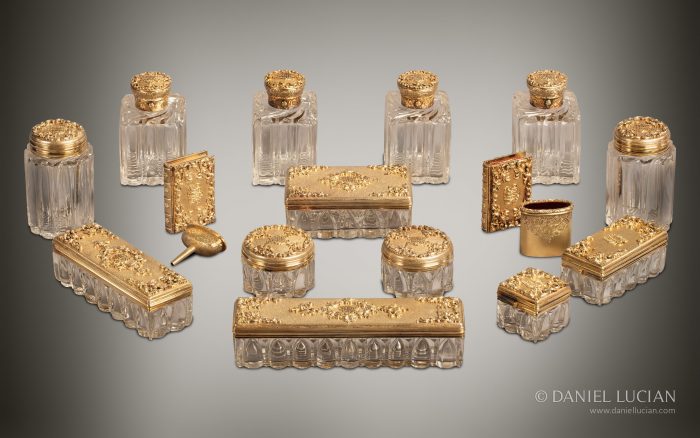
Silver-gilt bottles, jars and accessories from an antique dressing case from Asprey, displayed at the Great Exhibition of 1851.
Whilst many of the dressing case bottles and jars were intended to be multi-purpose, some had specific function:
Perfume and cologne bottles.
These are usually recognisable by their ‘neck and shoulder’ shape and are often situated along the rear compartment of the box. They have screw-threaded necks and tops, with either glass or cork stoppers in the neck to keep their contents sealed and airtight.
Double-ended perfume bottles (sometimes found in larger dressing cases) were designed to contain perfume at one end and smelling salts at the other. Partitioned in the middle, both ends are sealed with either a glass or cork stopper, or a cork-lined top. The tops themselves are screw-threaded or, as was more often the case with the smelling salts end, hinged with a spring-loaded opening mechanism.
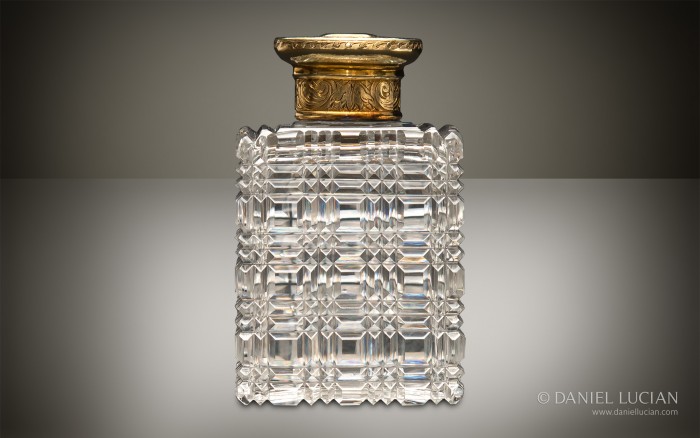
Perfume bottle from an antique dressing case with silver-gilt / gold fittings by Asprey & Sons.
Toothbrush jar.
Being the longest of the rectangular jars, and usually situated towards the front of the box, they sometimes had small drilled or pierced holes in the lid to aid the aeration of the toothbrush after usage.
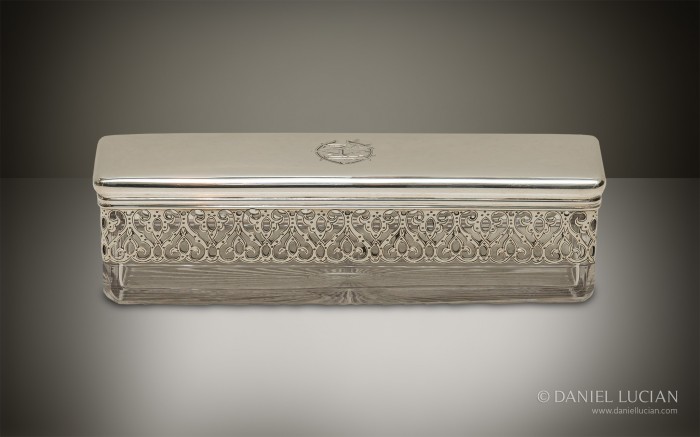
Toothbrush jar from an antique dressing case with Betjemann Patent mechanism, by Jenner & Knewstub.
Soap dish jar.
These jars are either rectangular or oval in shape, often included in pairs, with tight-fitting lift-off lids.
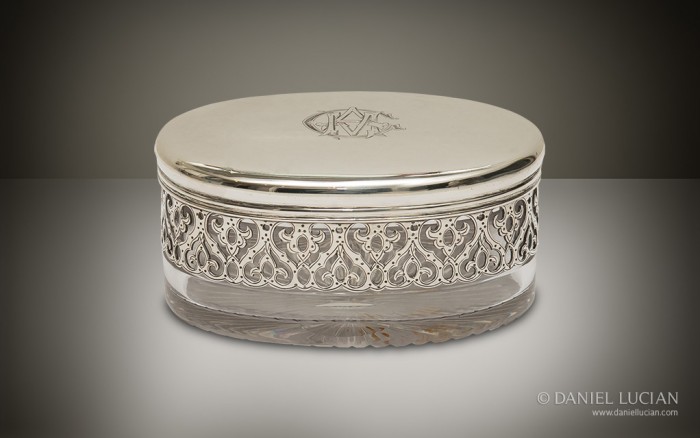
Soap jar from an antique dressing case with Betjemann Patent mechanism, by Jenner & Knewstub.
Matchbox and match striker.
This jar is rectangular in shape with a hinged lid, fastened by a spring-catch. Once unfastened, a small spring-loaded rod by the rear hinge allows the lid to pop up. The inclusion of a match-striking surface that also serves as a hinged cover to the match compartment underneath, differentiates this jar from other similarly shaped varieties.
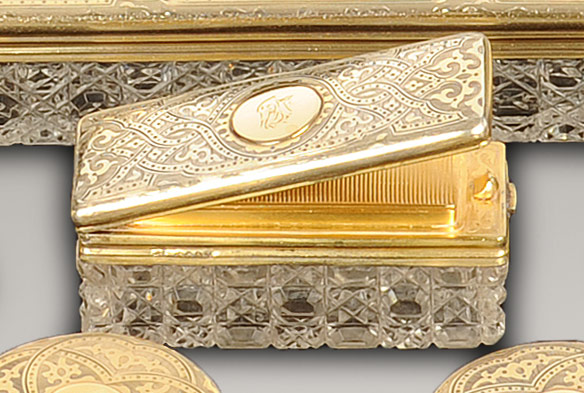
Antique matchbox and match striker with silver-gilt / gold lid by Walter Thornhill.
Spirit bottle and beaker.
Though their inclusion in dressing cases was rare, the bottle and beaker set are usually placed in the middle of the rear compartment. The cylindrical glass bottle, with a silver screw-threaded top, sits snuggly within the solid silver beaker, and would contain a small measure of drinking alcohol.
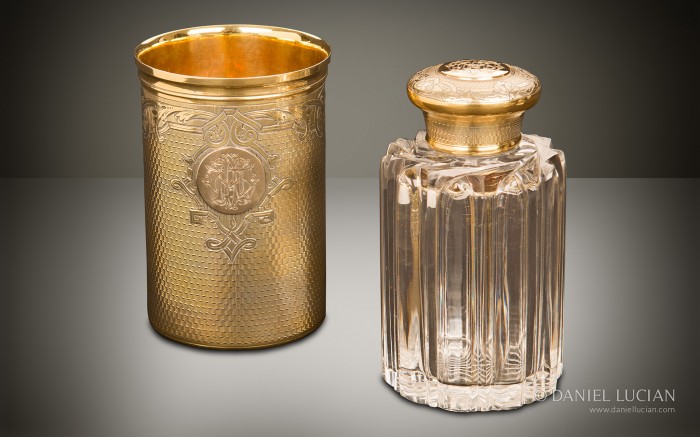
Spirit bottle and beaker from an antique dressing case with silver-gilt / gold fittings by Asprey & Sons.
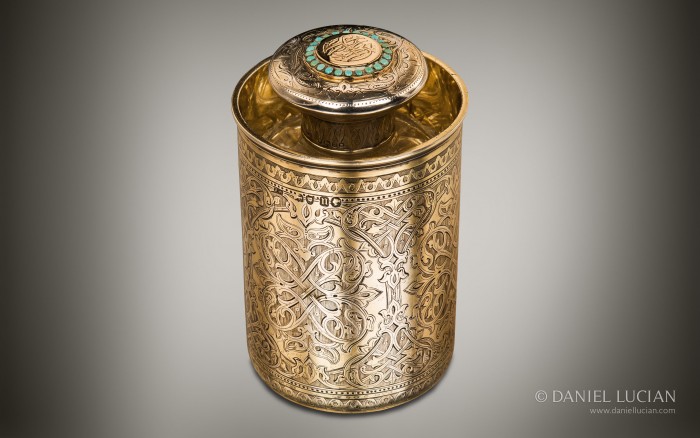
Silver-gilt spirit bottle and beaker set from an antique dressing case by Asprey & Sons.. The top to the spirit bottle has been inset with gold, accompanying a perimeter of turquoises.
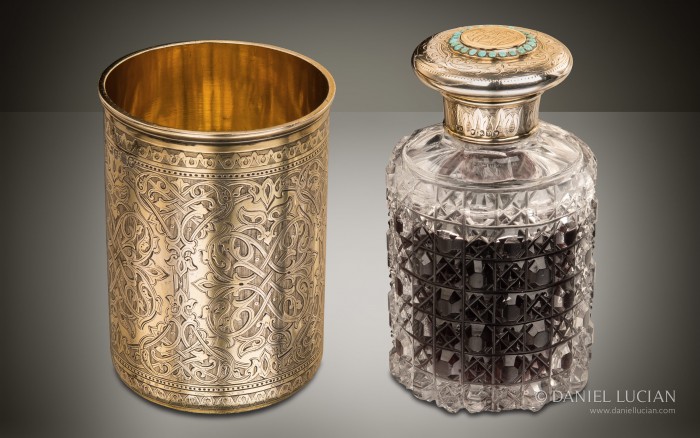
Silver-gilt spirit bottle and beaker set from an antique dressing case by Asprey & Sons.
Travelling inkwell.
The travelling inkwells fitted into dressing cases tended to differ from the more conventional and recognisable varieties found in writing and stationery boxes. Within dressing cases, these inkwells are among the smallest pieces of glassware in the set; the lid of the inkwell is fitted with a small inset folding handle that, when turned, screws it down tightly and securely. The underside of the lid has a circular cork or padded leather surface that engages tightly to the circular mouth of the glass well; this not only creates a seal, but also prevents spillage during transit. Note: This same screw-handle securing lid design is also found on some multi-purpose jars, used to contain other liquid-based substances.
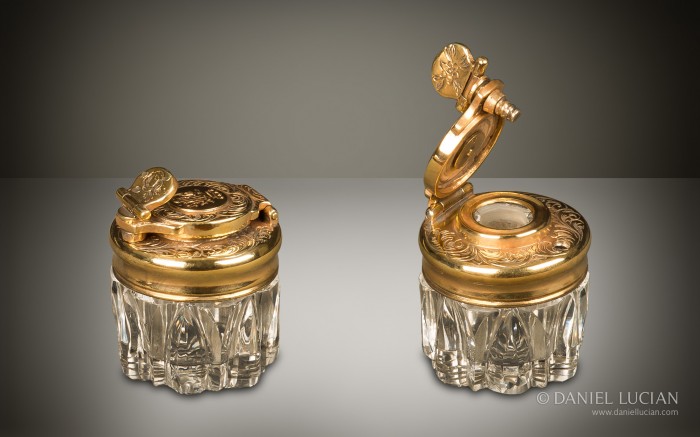
Travelling inkwell from an antique dressing case with silver-gilt / gold fittings by Asprey & Sons.
Vinaigrette.
A vinaigrette is a small, and usually elaborate, container for aromatic vinegars or perfumes. It was used predominantly by ladies of a certain standing, who would breathe in these aromatic fragrances when having to endure unpleasant odours, often during city travel, or simply to gratify their senses. Depending on what ingredients were infused, this could just provide a fragrant calming effect, through to acting like a mild smelling salt to counteract a swoon or a feeling of faintness.
At a time when it was still believed that diseases were spread by bad, unsanitary odours, the vinaigrette served as a portable [alas, placebic] lifesaver. Vinaigrettes employ a hinged, flip-open outer lid to aid immediacy of access and inhalation. A small piece of sponge is saturated with fragrance or vinegar, and placed behind an internal hinged, pierced and usually decorated grille. Due to the acetic acid in the vinegar, all surfaces that either make contact with, or are in close proximity to the sponge, are gilded to prevent corrosion or staining to the silver, as gold is unreactive to acetic acid.
Like dressing cases, vinaigrettes were quite the status symbol, but on an even more portable scale. Perfume and fragrances were an extravagance during the Regency and Victorian period, so the wearing of such was an overt display of wealth and class.
The vinaigrette would be carried about the person, either in a pocket, reticule, around the waist using a chatelaine (a set of decorative chains with hooks on which to hang small articles from a belt or pocket), or in the form of jewellery around the neck or wrist.
Some examples of vinaigrettes, as shown below, combine a separate perfume receptacle to one side and a vinaigrette to the other.
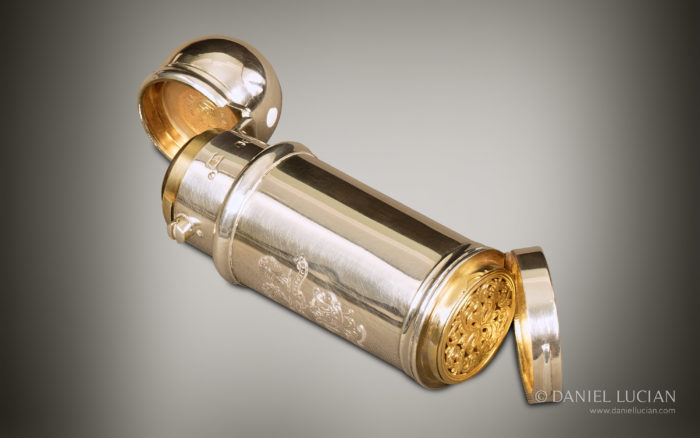
A double-ended silver vinaigrette and perfume bottle taken from an antique dressing case in coromandel, by Jenner & Knewstub, belonging to the Lady Mayoress of London
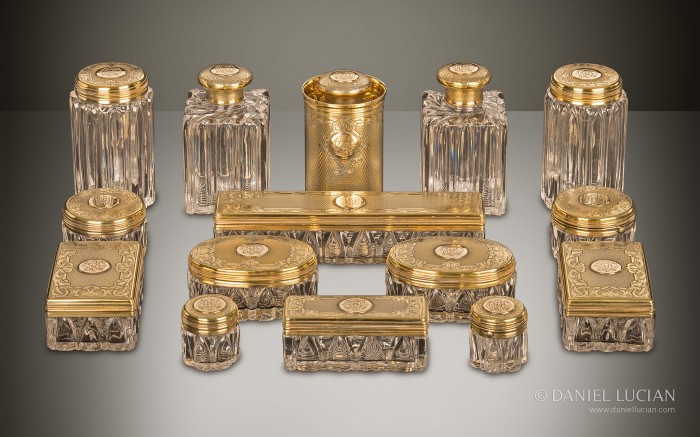
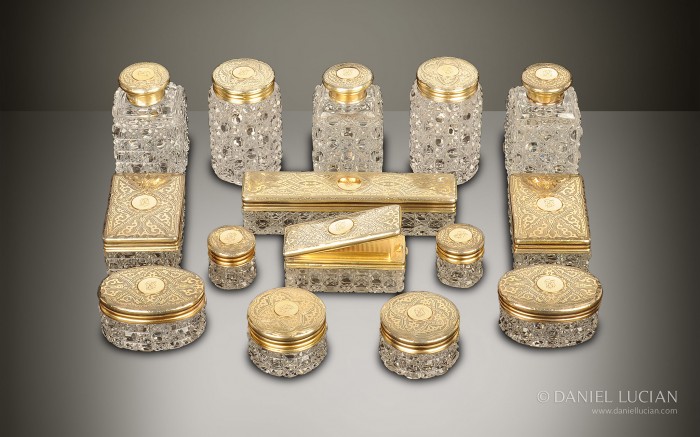
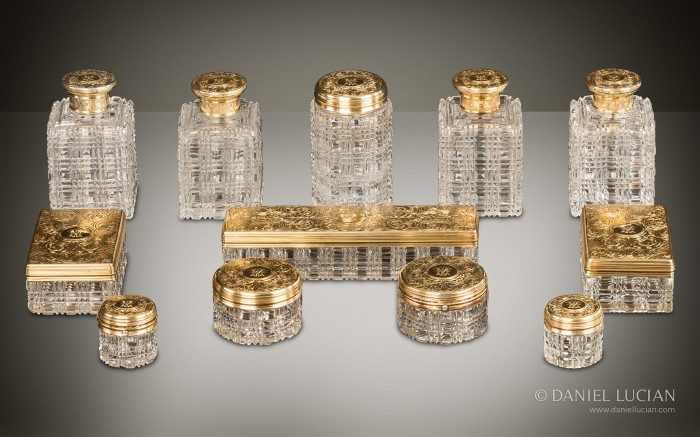
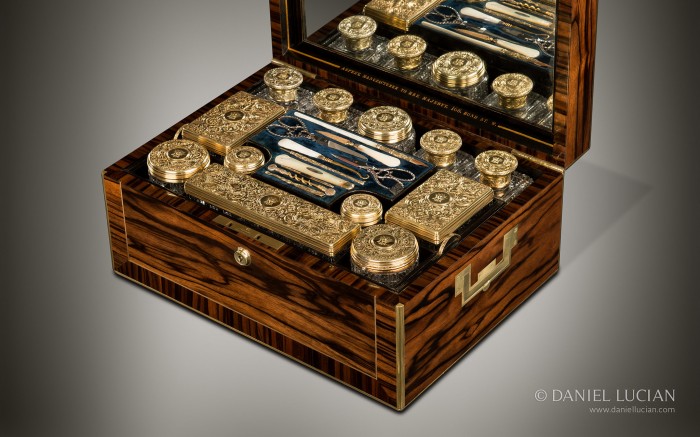
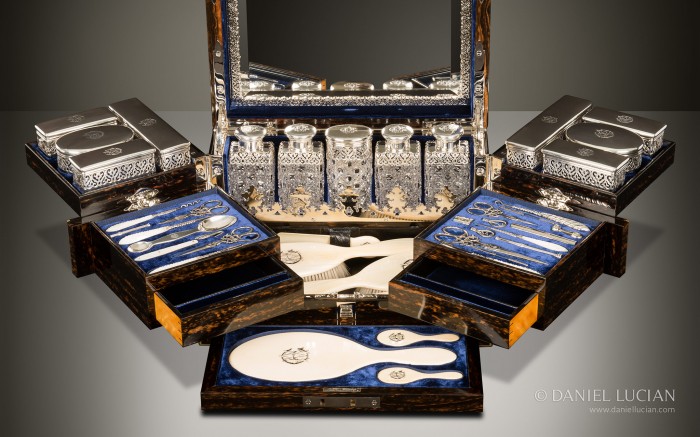
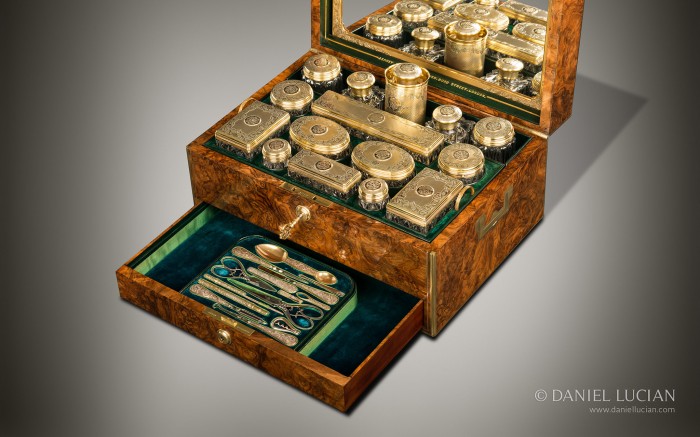
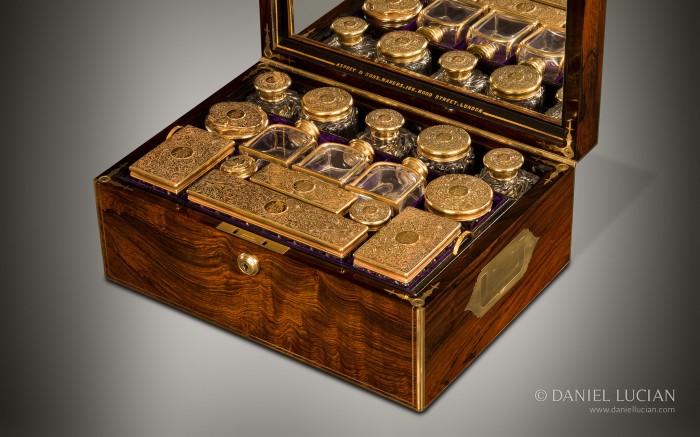
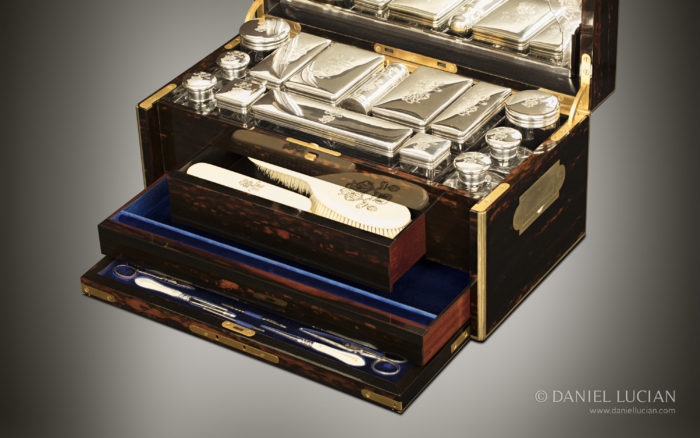
 Price On Application
Price On Application